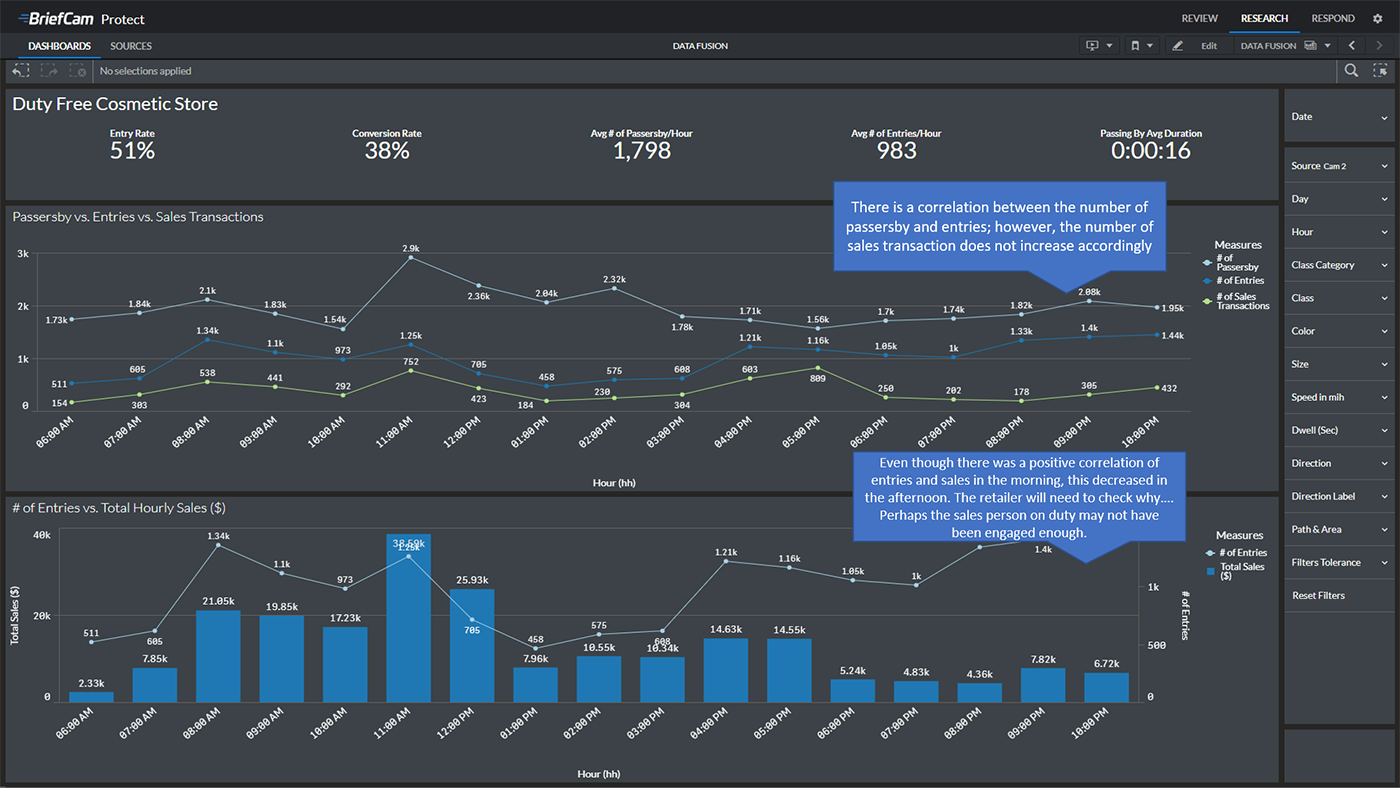Gather Business Intelligence Data from Video Analytics

In today’s world, we frequently hear about the importance of Big Data – and for good reason: Business intelligence (BI) is playing an increasingly central role in organizations’ decision-making, and the ability to harness, analyze and utilize available volumes of information is crucial for all organizations regardless of size and function. A wealth of data can be drawn from the sensors typically used by businesses, and this data can then be leveraged for intelligence purposes. The next frontier in BI could be taking this one step further and integrating the data from multiple sources, combining the individual data sets and analyzing the comprehensive data intelligence: This practice, called Data Fusion, means that businesses could derive value from the integrated data from all their sensors, leveraging it for new applications.
For instance, Video Content Analytics data could be fused with data collected by smart Point of Sale (POS) systems in order to gain insights, to uncover trends and patterns and to drive more efficient and effective retail operations. Imagine a Duty-Free shop at an airport that has video cameras installed at its entrances. By evaluating the aggregated data from the multiple sensors at the store’s disposal – from the video cameras, to the POS and others – and integrating the information, the store management could gain critical insight: How many people pass the Duty-Free storefront? Of those, how many people enter the store? When correlated with the store’s revenue data, this information could help operations managers understand how many of those store entries turned into actual sales.
This business intelligence could be used to understand and correlate data points about profits, but it also could be extended for answering questions, such as: if 10% more of the people passing the store entered the shop, what could be the potential conversion rate and revenue accrued? What promotional changes could be made to drive more people into the store?
The combined data sets could also be used to highlight issues that have gone unnoticed, such as why are there so few conversions compared to the amount of store entries? By creating a fuller picture based on multiple data sources, airport retail managers could assess factors and discover, understand and address inefficiencies that occur.
Data Fusion could also support deeper trend evaluation: When correlated with the time of day or week or year, does the disparity between POS conversion data and store entries change based on timing? When compared to flight schedule data, are conversions and store entry rates affected by flight delays or cancellations? By merely leveraging already available intelligence, airport retailers can immediately uncover insights and hidden correlations and also harness the data for driving operational efficiency in the long term.
Beyond supplying data intelligence for stores within a complex, Data Fusion also could be used for helping sell and rent space. Airports, shopping centers and real estate companies could maximize their activities, by taking advantage of the business intelligence provided by their sensors and presenting, for instance, quantifiable sales and traffic data about which spaces are most strategic for prospective renters and buyers. Using quantitative intelligence, these organizations could set pricing based on concrete factors, so that both the customers and the business benefit. The ability to demonstrate the strategic value of each property, enables well-founded and justifiable pricing that correlates to the potential revenues that could be generated because of the space placement. Historic shop data could even be provided to suggest where to station promotions, displays and staffers in the store for optimal results.
As more data becomes available, accessible and usable, and as the BI space develops and expands, new opportunities for innovation and intelligence continue to provide new value to businesses and their customers. Business intelligence empowers companies to offer efficiency and seamless experiences, and the possibilities for optimization will only continue to grow as applications for potentialities, such as Data Fusion, are explored and created.
Signup to receive a monthly blog digest.